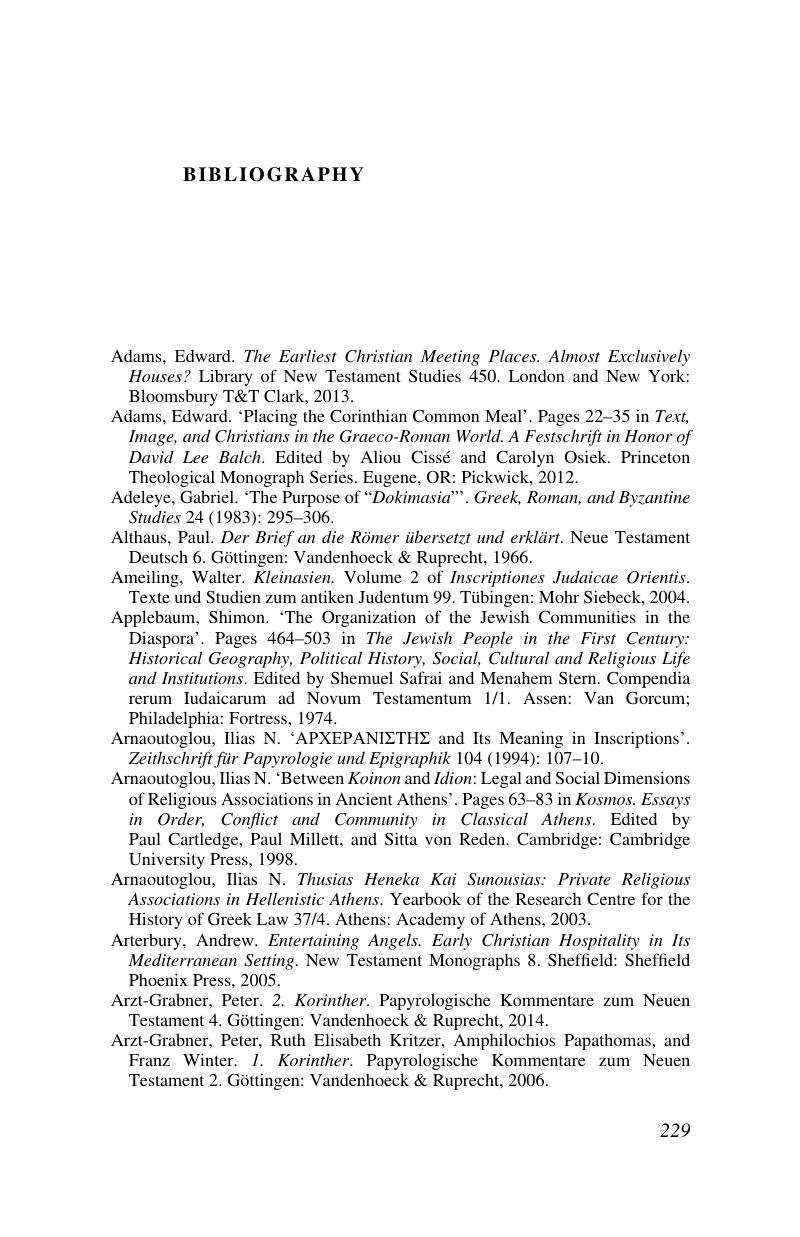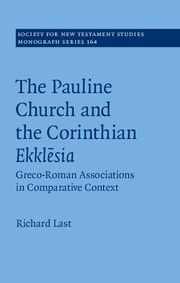Book contents
- The Pauline Church and the CorinthianEkklēsiaGreco-Roman Associations in Comparative ContextVolume 164
- Society for New Testament Studies
- Society for New Testament Studies
- The Pauline Church and the CorinthianEkklēsia
- Copyright page
- Contents
- Tables
- Preface
- Glossary
- Introduction
- 1 Greco-Roman Associations as an Analytic Category
- 2 House andEkklēsia
- 3 Two Economically Modest Associations
- 4 The Costs ofEkklēsiaSurvival
- 5 Keeping Up with the θιασῶται
- 6 Strengthening the Weak
- 7 The Election and Crowning of Officers1
- Conclusion
- Book part
- Bibliography
- Index of Ancient Sources
- Index of Subjects
- References
Bibliography
Published online by Cambridge University Press: 05 November 2015
- The Pauline Church and the CorinthianEkklēsiaGreco-Roman Associations in Comparative ContextVolume 164
- Society for New Testament Studies
- Society for New Testament Studies
- The Pauline Church and the CorinthianEkklēsia
- Copyright page
- Contents
- Tables
- Preface
- Glossary
- Introduction
- 1 Greco-Roman Associations as an Analytic Category
- 2 House andEkklēsia
- 3 Two Economically Modest Associations
- 4 The Costs ofEkklēsiaSurvival
- 5 Keeping Up with the θιασῶται
- 6 Strengthening the Weak
- 7 The Election and Crowning of Officers1
- Conclusion
- Book part
- Bibliography
- Index of Ancient Sources
- Index of Subjects
- References
Summary

- Type
- Chapter
- Information
- The Pauline Church and the Corinthian EkklesiaGreco-Roman Associations in Comparative Context, pp. 229 - 248Publisher: Cambridge University PressPrint publication year: 2015



